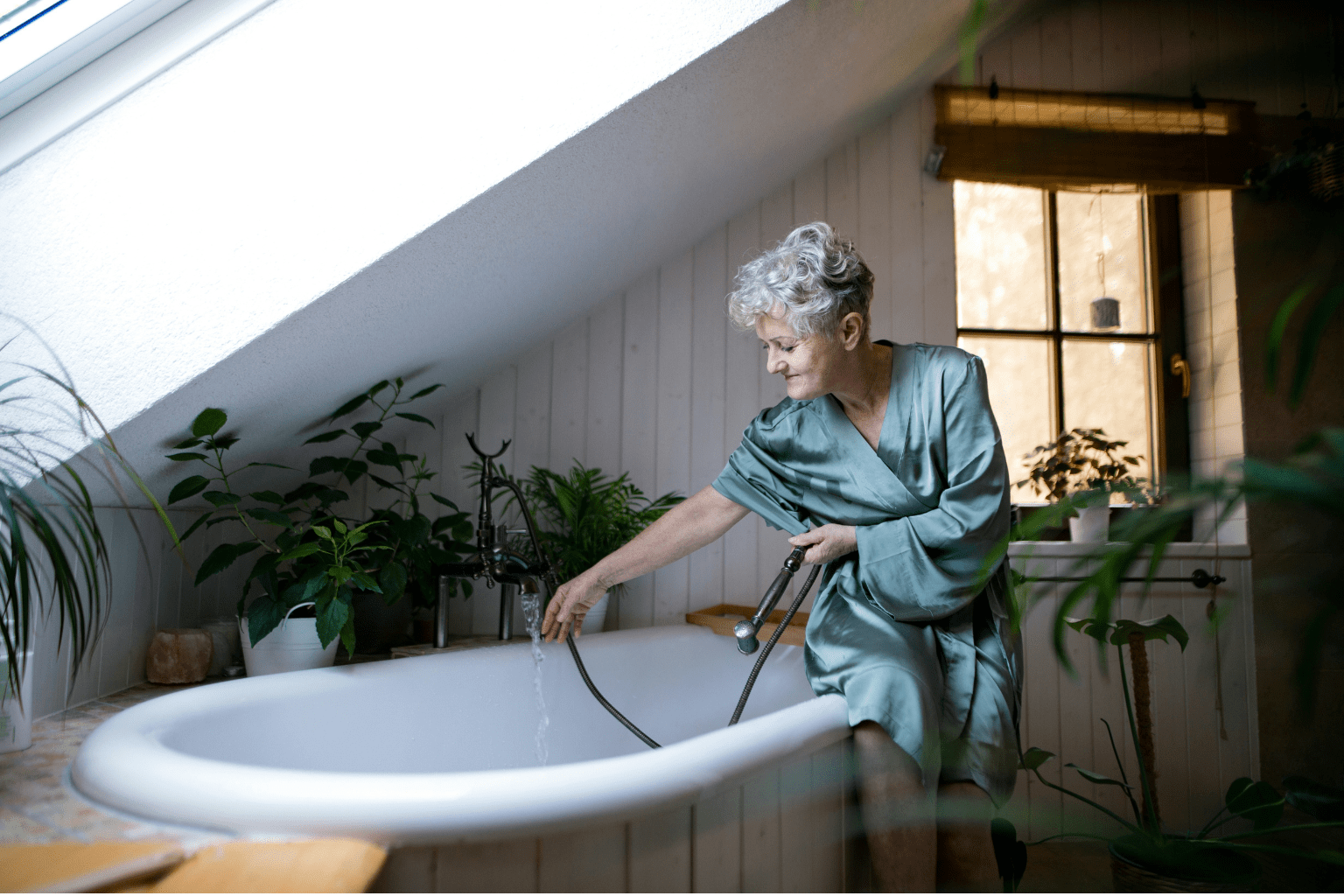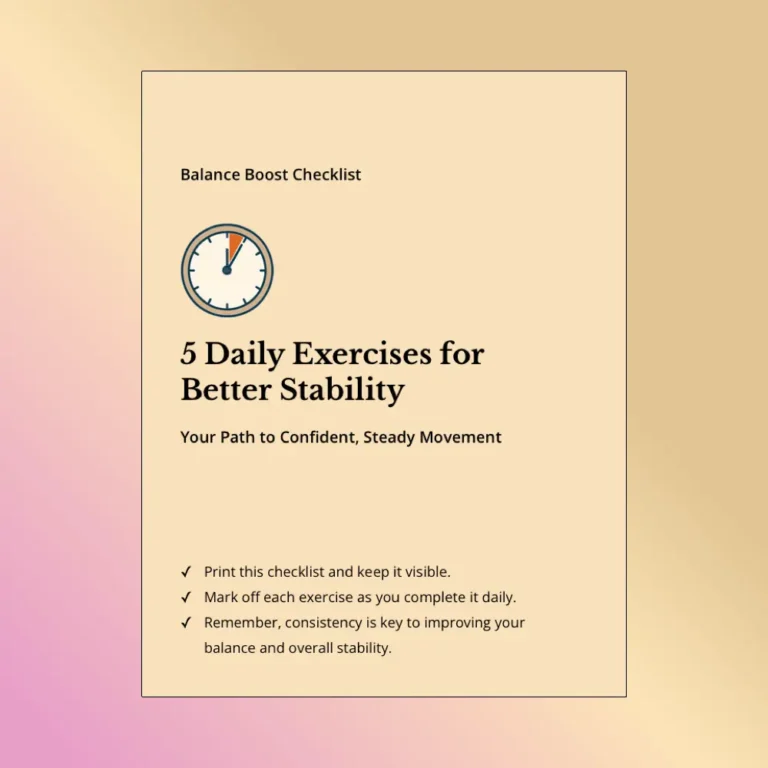
Highlights

Making your bathroom safe is more than just a practical concern, it’s a crucial step toward protecting elderly family members. Falling in the bathroom can be more dangerous than most think, for the elderly and even the young. With slippery surfaces, poor lighting, and hard-to-reach fixtures, bathrooms can be particularly hazardous for anyone. These concerns emphasize just how critical it is to make the bathroom safe for senior citizens.
Bathrooms hide countless dangers, especially for the elderly. Wet bathroom floors, poor lighting, and hard-to-reach fixtures increase the risk of falling, especially for seniors with reduced vision or balance issues.
Over 800,000 hospitalizations occur each year because of fall injuries, many of which occur in bathrooms. These falls can result in anything from minor bruising to serious injuries like hip fractures, traumatic brain injuries or the need for assisted living. Learning about proper risk assessment to prevent falls can help reduce these incidents dramatically.
One of the simplest yet most effective step to improve bathroom safety is to install grab bars around key areas such as the toilet, shower, and bathtub. These bars provide added safety and help prevet slips when seniors get out if the shower.
Recommended grab bar locations:
Today’s grab bars come in stylish designs that complement bathroom décor rather than giving an institutional feel. Look for bars that can support at least 250 pounds and make sure they’re installed securely into wall studs or with appropriate anchoring systems.
Slippery floors are a major hazard, but several solutions can significantly improve traction and help create a safer bathroom:
When choosing flooring, remember that highly polished surfaces might look elegant but can become treacherous when wet. Opt for materials with some texture that provide grip without sacrificing style.
Many seniors struggle with standard-height toilets. To make the bathroom more senior-friendly:
These modifications make using the toilet easier for seniors with arthritis or mobility limitations.
Traditional bathtubs require stepping over high sides, a significant fall risk for older adults. Converting to a walk-in shower eliminates this hazard and offers additional benefits:
For those who prefer baths, walk-in tubs with watertight doors offer a safer alternative to traditional tubs, though they tend to be more expensive than shower conversions.
Good lighting is essential for senior living. It’s a critical safety feature, especially for seniors who may have impaired vision, which increases the chances of bathroom injuries, especially during nighttime bathroom visits. Proper illumination helps prevent missteps and falls by clearly revealing obstacles, edges, and transitions between surfaces.
Smart lighting choices can dramatically improve bathroom safety:
These additions make it easier to see hazards in the bathroom and move confidently.
Safety modifications does not mean you must renovate the entire space to make your bathroom safe:
The good news is that you can make meaningful safety improvements at almost any price point, start with the most pressing needs and scale up gradually.
Investing in bathroom safety offers returns beyond just preventing falls. These modifications can:
Many real estate experts now recognize the value of accessible design features, with some estimates suggesting up to 70% return on investment for well-executed bathroom modifications.
While some safety improvements are perfect for DIY enthusiasts, others require professional skills:
DIY-friendly projects:
Projects for professionals:
When safety is the primary concern, professional installation often provides peace of mind that critical elements like grab bars are securely anchored and electrical modifications meet code requirements.
Many seniors don’t realize that Medicare might help pay for certain bathroom safety modifications. While Original Medicare (Parts A and B) typically doesn’t cover home modifications directly, there are exceptions:
The key factor is medical necessity, modifications must be prescribed by a healthcare provider as necessary for a specific medical condition.
To maximize potential coverage:
The benefits of bathroom safety modifications extend far beyond physical protection. A safer bathroom environment provides:
For many seniors, knowing they can safely manage personal care without assistance makes a tremendous difference in quality of life and self-esteem.
Real stories highlight the impact of bathroom safety improvements:
Many seniors report that seemingly small changes make enormous differences. One 78-year-old woman shared that installing a grab bar near the toilet “gave me back my independence” after knee surgery. Another senior mentioned that a walk-in tub “removed the daily fear” he felt trying to step over his old tub.
These personal accounts consistently show that bathroom safety modifications not only prevent physical injuries but also restore confidence and reduce daily stress. Seniors with reduced vision particularly benefit from improved lighting and color-contrasting features in the bathroom.
Implementing these bathroom safety tips for seniors can significantly reduce hazards in the bathroom and help ensure a safe environment for elderly loved ones.
Which modifications provide the best ROI? Grab bars and non-slip mats typically offer the best return on investment. They’re relatively inexpensive compared to their safety benefits, and they appeal to many homebuyers looking for accessible features. Walk-in showers can also add significant value, especially in communities with older populations.
Should I choose DIY or professional installation? Simple modifications like adhesive non-slip strips or toilet seat risers are perfect for DIY. However, anything involving plumbing, electrical work, or structural support (like properly anchored grab bars) is usually best left to professionals. Your safety is worth the extra cost of proper installation.
What are the Medicare coverage options for bathroom modifications? Medicare may cover certain bathroom safety items when prescribed by a healthcare provider as medically necessary. This typically includes specific durable medical equipment like certain types of grab bars or toilet frames. A Medicare Advantage plan sometimes offers additional coverage for home safety modifications, so check your specific plan details.
Whether you’re preparing a home for an elderly loved one or updating your own space, these bathroom safety tips for seniors can help prevent injuries, improve daily routines, and support aging in place.
The best approach is often gradual, start with the most critical safety issues and build from there as budget allows. Remember that many modifications serve double duty, enhancing both safety and convenience while potentially increasing home value. Knowing what to do if an elderly person falls is also crucial for family members and caregivers.
Seniors with arthritis may need additional considerations for bathroom fixtures that are easier to grip and operate. Regular fall prevention exercises can also complement bathroom safety improvements by strengthening muscles and improving balance.
For additional insights on making your home more age-friendly, take a look at Rebath’s tips for aging in place. Your home should support your changing needs throughout life’s journey, and the bathroom is an excellent place to begin making those important adaptations.
For a more visual understanding of bathroom safety modifications, check out these helpful videos:
Learn the step-by-step process of installing grab bars for enhanced bathroom safety.
Discover the benefits and features of walk-in showers designed for safety and accessibility.
